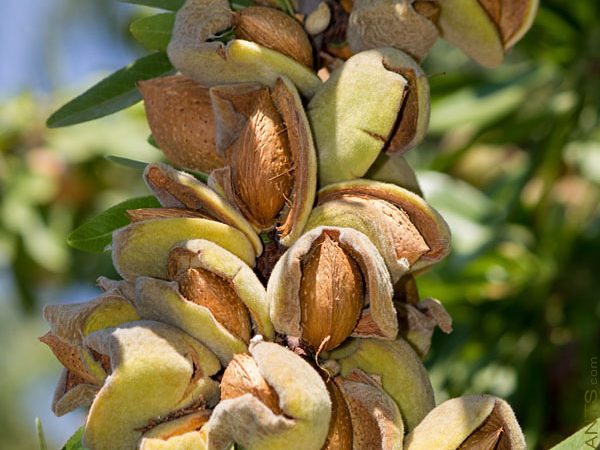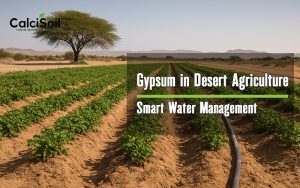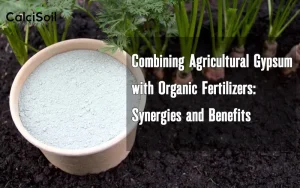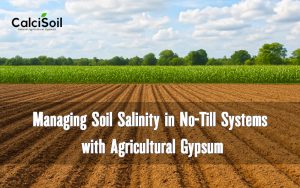
Using agricultural gypsum in almond orchards
Using agricultural gypsum in almond orchards is a practice that significantly enhances soil health and tree productivity. This mineral, primarily composed of calcium sulfate, plays a crucial role in improving soil structure, nutrient availability, and overall orchard management. Below is an expanded discussion on the application and benefits of gypsum in almond orchards.
Timing of Gypsum Application
The application of gypsum should ideally occur during the dormant period of almond trees, which spans autumn and winter. This timing allows for optimal absorption and integration into the soil without interfering with the trees’ growth cycles.
However, it is important to note that gypsum can also be applied during the growing season, provided that certain conditions are met, such as adequate moisture levels in the soil. Gypsum is moderately soluble and has a low salt concentration, which minimizes the risk of toxicity to trees when applied during their active growth phase. To determine the appropriate amount of agricultural gypsum required for specific orchards, consulting with soil and agricultural experts is recommended.
Application Techniques
Surface Application
When applying gypsum in its unground form, it should be spread on the soil surface in strips along both sides of the tree rows. Each strip should extend at least 1.5 meters from the trunk to ensure effective coverage.
Following this surface application, it is crucial to irrigate heavily to facilitate the movement of gypsum into the soil profile. The primary goal of this method is to enhance soil conditions rather than mixing gypsum with fertilizers, as this could diminish its effectiveness.
Dissolving Gypsum in Irrigation Water
Another effective method for applying agricultural gypsum involves dissolving it in irrigation water. This can be done at the pool or terrace entrance before water flows into the orchard.
By doing so, growers can ensure an even distribution of dissolved gypsum throughout the agricultural land alongside water. Regardless of the method used for application, heavy irrigation must follow to prevent gypsum from accumulating on the soil surface.
Importance of Heavy Irrigation
To avoid the potential buildup of gypsum on topsoil, it is advisable to apply it just before heavy rainfall or to conduct significant irrigation afterward. This practice ensures that gypsum penetrates deeply into the soil where it can be utilized by almond trees effectively.
The specific amount of irrigation required will vary based on factors such as soil type, existing moisture levels, and local rainfall patterns. Adhering to manufacturer guidelines regarding application rates and irrigation practices will help achieve optimal results.
Benefits of Gypsum in Almond Orchards
The incorporation of agricultural gypsum into almond orchard management offers numerous benefits:
- Improved Soil Structure: Gypsum aids in breaking up compacted soils, enhancing aeration and drainage properties. This improvement allows roots to penetrate more easily and access essential nutrients and water.
- Enhanced Nutrient Uptake: By improving soil structure and reducing salinity levels, gypsum facilitates better absorption of vital nutrients by almond trees, promoting healthy growth.
- Reduced Water Stress: Enhanced drainage capabilities lead to less waterlogging around roots, which is particularly beneficial in regions susceptible to drought.
- Neutral Salt Properties: As a neutral salt, gypsum affects soil pH gradually, helping maintain a balanced environment conducive to almond tree growth.
- Increased Yield and Quality: The cumulative effects of improved soil health contribute to higher yields and better quality almonds, ultimately benefiting growers economically.
Conclusion
In summary, using agricultural gypsum in almond orchards is a strategic practice that fosters healthier soils and more productive trees. By applying gypsum during appropriate seasons and utilizing effective irrigation techniques, growers can significantly enhance their orchard’s performance. The benefits extend beyond immediate improvements in soil structure; they contribute to sustainable farming practices that ensure long-term productivity and profitability in almond cultivation.







